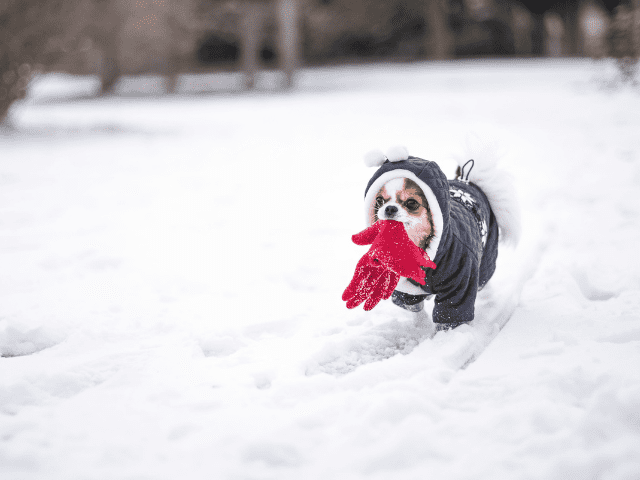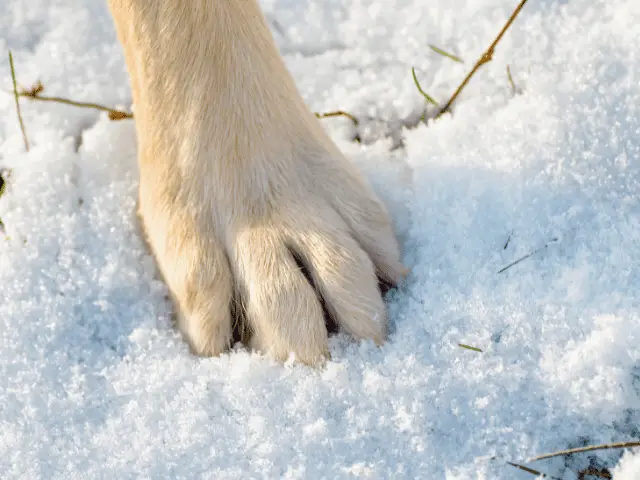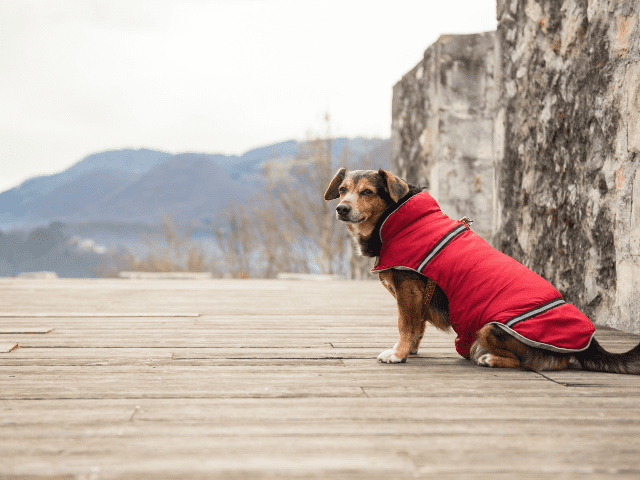Dog owners and their furry companions love hiking season, but winter can present some challenges to you and your dog in terms of safety and comfort. It’s important to make sure your dog stays warm when you head out on your next hike, especially if they don’t have fluffy coats like a Husky or Malamute.
Here are some tips on how to hike with dogs in the snow in order to keep them safe and happy no matter what conditions Mother Nature throws at you.
Keeping Your Dog Warm During Cold Weather

It’s important to keep your dog warm during cold weather, especially if you’ll be hiking in the snow. Here are a few tips:
- Invest in a good dog coat or sweater.
- If it’s really cold out, consider getting booties for your pup to protect their paws.
- Be sure to check the forecast before heading out – if it’s going to be below freezing, it might be best to stay indoors.
- Bring along extra blankets in case your dog gets cold.
- Make sure your dog has plenty of water to drink – they can get dehydrated just like humans do, even in the cold!
- Be careful not to over-exercise your dog – they might get too tired and chilly.
Some dogs are more sensitive than others to the cold and could get sick or hurt from being outside in freezing weather. You should get to know your dog’s tolerances of temperatures while at home before taking them hiking in cold or hot temperatures.
If you know your dog might be sensitive to cold weather, consider wearing a coat or sweater when you go out for walks or hikes during colder months. Dogs with thinner coats may need help staying warm while dogs with thick undercoats may not need an extra layer!
If your dog seems colder than normal, he may have hypothermia . Hypothermia is a condition where a person or dog’s body loses heat faster than it can produce it. Symptoms of hypothermia include shivering, slurred speech and drowsiness – and if left untreated, hypothermia can be fatal!
. Hypothermia is a condition where a person or dog’s body loses heat faster than it can produce it. Symptoms of hypothermia include shivering, slurred speech and drowsiness – and if left untreated, hypothermia can be fatal!
Fortunately, mild cases of hypothermia can be treated at home. Get your dog indoors as soon as possible to warm them up. Remove any damp or wet clothing and use a towel to dry their fur, but don’t give your pup too much hot food or drink right away as warming up too quickly can be dangerous.
You should also contact your vet as soon as possible so they can help assess how severe the hypothermia is and if your dog needs to come to the vet.
What to Wear When Hiking With Your Dog in the Snow

It’s important to keep your dog warm when hiking in the snow, just like you would for yourself. A coat or sweater is a good idea, especially if it’s waterproof and your dog doesn’t have a thick undercoat. A coat or sweater may be especially important if your dog has short, thin fur.
You’ll also want to protect their paws by getting them booties or waterproof socks, which are particularly important if they’re going to be running around on roads that have salt on them. De-icing salt can hurt your dog’s paws. Either avoid salted roads or keep booties on your dog so that they don’t get hurt!
Watch Out for Frostbite when Hiking in the Snow
When hiking in the snow, it’s important to watch out for frostbite on your dog. Frostbite can occur when exposed skin is cold and wet for a long period of time. Symptoms include pale or gray skin, firm or hard skin, and pain when touched.
If you suspect your dog has frostbite, warm the affected area gradually and see a veterinarian as soon as possible. To prevent frostbite, make sure your dog is well-protected from the cold weather before heading out on your hike.
When it comes to hiking with dogs, many people think of summer and long hours spent exploring nature. But winter hikes can be just as fun and rewarding, especially if you plan ahead. Make sure you are dressing your dog in clothing that protects them from both temperature and wind chill to keep them safe.
The most vulnerable areas for frostbite are your dog’s toes, ears, tail and nose – if these areas start feeling numb or painful when exposed to cold weather for a long period of time, you should seek help immediately.
Check Your Dog’s Paws for Signs of Cold Weather Injury

It’s important to check your dog’s paws for signs of cold-weather injury after a hike in the snow. Look for redness, swelling, or cracked paw pads. If you see any of these signs, gently clean and dry the paw and apply a paw balm or petroleum jelly to help protect it from further damage. You should also consider using a dog boot or shoe to help protect your dog’s paws from the cold weather.
Dog boots are a great way to protect your dog’s paws from cold weather injury. Boots help keep your dog’s paws dry and act as an extra layer of insulation to prevent frostbite. There are various types of dog boots for different sizes of dogs, so it’s important to choose one that is appropriate for your dog.
Most brands have a sizing chart you can use to pick out a boot that will fit properly. Your dog should be able to move around freely and breathe easily while wearing his boot, so consider going up a size if you think it might be too tight. Some boots even come with Velcro straps on top or bottom, which makes them easier to take on and off once they’re in place on your dog’s foot.
Stay Alert for Signs of Hypothermia
When hiking with your dog in the snow, be on the lookout for signs of hypothermia, which can include lethargy, weakness, shivering, and trouble breathing. If you notice any of these signs, get your dog to a warm place immediately and call your veterinarian.
Dogs can lose a lot of heat through their paws, so it’s important to make sure they’re protected from the cold. Booties or paw wax can help keep your dog’s feet warm and dry.
You should also invest in a good winter coat for your dog. A coat that covers the belly and reaches down to the base of the tail will help keep your dog warm from head to toe.
Avoid Dangerous, Icy Areas
Winter weather can create some dangerous situations for you and your pup, so it’s important to take some extra precautions when hiking in the snow. First, avoid any areas that look like they might have thin ice – if you wouldn’t walk on it, your dog shouldn’t either.
Also, be aware of steep drop-offs or sudden changes in terrain that could be hazardous for your four-legged friend. And finally, watch out for wildlife – both predators and prey can pose a threat to your dog in their natural habitats.
Provide Your Dog with Waterproof Jackets

Before you head out on your hike, make sure your dog is properly outfitted for the cold weather. A waterproof jacket will help keep them warm and dry and prevent any snow from getting inside their fur. Even thick-coated dogs can benefit from a light waterproof jacket to make sure their coat stays nice and dry.
To keep your dog safe, monitor their skin and fur for any signs of discoloration or other damage. If you notice anything out of place, bring them back to a warm room as soon as possible and call your vet if necessary. Never let your dog play in the snow without supervision, as you don’t want them to get lost or injured.
Pack Plenty of Food and Water for You and Your Dog
Just like you need extra food and water when hiking in the snow, your dog will need more too. Their metabolism is working overtime to keep them warm, so they’ll need more calories. And since they’re likely to be active, they’ll need more water to stay hydrated. Pack enough for both of you and make sure to stop often to give your pup a drink and a snack.
With these helpful tips, you’ll be able to safely hike with your dog in the snow! If you ever have any concerns about the health of your dog, make sure you reach out to your veterinarian for guidance.
